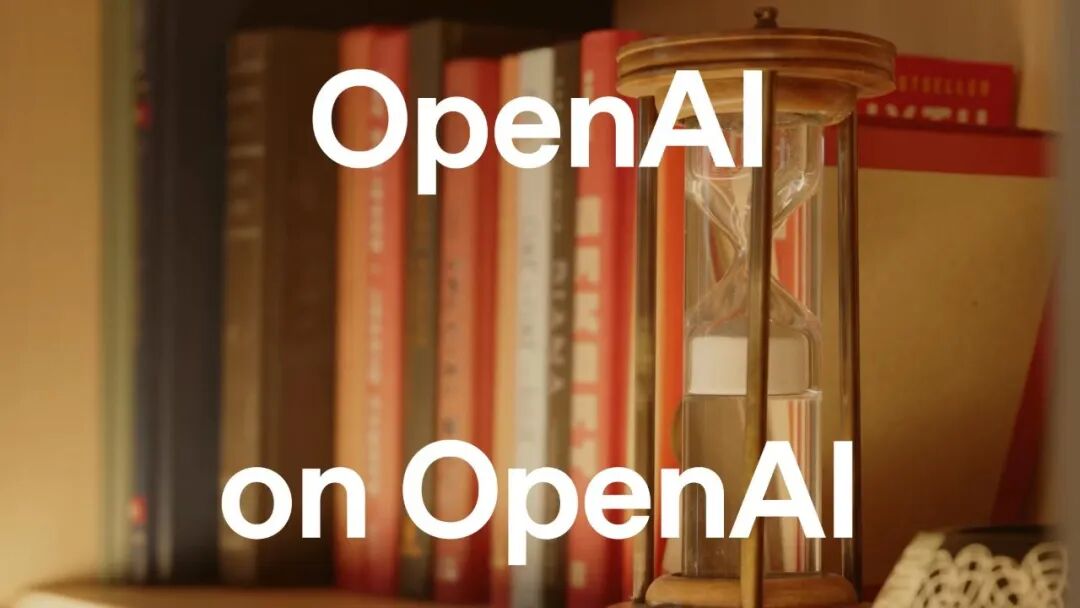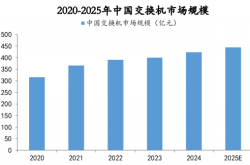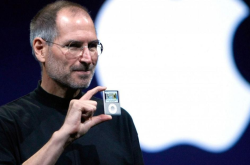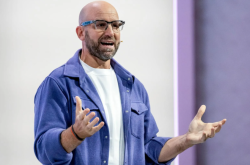Restructuring and Aiming for Listing: OpenAI Gains Greater Freedom
![]() 11/05 2025
11/05 2025
![]() 387
387
By Dou Wenxue
Edited by Ziye
In recent days, OpenAI, the most talked-about company in the AI circle, has released a series of exciting news for investors.
According to a report by Finacial Linked, market sources indicate that OpenAI is preparing for an initial public offering (IPO), which could value the company at up to $1 trillion. This would potentially make it the largest IPO in history.
The report also cited industry insiders as saying that OpenAI is considering submitting its listing application to securities regulators as early as the second half of 2026, with initial discussions pointing to a fundraising target of at least $60 billion.
OpenAI CEO Sam Altman denied rumors of a listing next year, stating that going public is a natural stage in the company's development but not a current priority. He mentioned that there is no specific date for an IPO and suggested that 2027 might be a more suitable time.
Prior to this, OpenAI had just announced the completion of its architectural restructuring, converting investments from various parties into common stock and lifting previous potential restrictions on financial returns.
At the same time, OpenAI's relationship with Microsoft has also evolved, transitioning from a 'deeply bound' stage to one of 'free cooperation,' allowing both sides to collaborate with other companies as well.
Typically, a tech company with solid technical fundamentals and strong capital appeal seeking to go public should face a smooth path.
However, OpenAI's situation is different. From its inception, it was a purely non-profit organization, emphasizing long-term, high-cost basic research without being constrained by profitability.
Therefore, throughout its more than a decade of existence, any commercialization attempts by OpenAI have raised market concerns.
But as a company aiming for AGI, OpenAI requires massive amounts of funding. While upholding idealism is important, earning money to sustain continuous R&D investment and support for high computing power is also a necessary choice.
After restructuring, OpenAI will no longer be a purely non-profit organization but will balance commercial and public interest goals through a dual-layer structure. It will continue to be controlled by a non-profit organization, while its existing for-profit business will transform into a public benefit corporation, which will be controlled by the non-profit.
Furthermore, if OpenAI successfully goes public, it will bring substantial returns to early investors such as Microsoft and SoftBank.
However, with the mission of a non-profit organization on one side and increasing financial pressure on the other, whether the restructured OpenAI can truly follow the path expected by the market remains to be verified.
1. OpenAI Completes Restructuring, Relationship with Microsoft Changes
OpenAI began planning this restructuring long ago.
Late last year, OpenAI announced its intention to transition into a for-profit company by 2025, with its new structure to be controlled by its for-profit division.
However, for OpenAI, shifting from non-profit to fully for-profit may have been challenging. The restructuring plan remained unresolved after its announcement until May 6th of this year when OpenAI abandoned the idea of a full for-profit transition. Instead, the company will continue to be controlled by its non-profit parent but will transform its existing for-profit division into a public benefit corporation (PBC), adopting the PBC model.
It is understood that the PBC is an organizational structure that allows for profitability while also considering social welfare. Steve Sharpe, a spokesperson for OpenAI, previously stated that after transitioning to a PBC, OpenAI would eliminate its profit cap structure and adopt a traditional capital structure, allowing employees, investors, and non-profit organizations to directly hold equity—aiming for greater profitability and listing.
According to the agreement disclosed by Microsoft, after the restructuring, OpenAI's non-profit entity has been renamed the OpenAI Foundation and holds approximately $130 billion in equity in the for-profit division. OpenAI's for-profit division has been restructured into a public benefit corporation named OpenAI Group PBC.

Image source: OpenAI official website
As OpenAI's largest investor, Microsoft's shareholding ratio after the restructuring and its future cooperation model with OpenAI have also attracted market attention.
The collaboration between the two sides began in 2019 when Microsoft invested $1 billion in OpenAI.
Under the agreement, Microsoft provided OpenAI with a total of $1 billion in cash and Azure cloud computing resources to support its R&D and model training. In return, OpenAI agreed to migrate its services to Microsoft's Azure cloud platform, with Microsoft becoming its exclusive cloud provider.
Additionally, Microsoft gained exclusive rights to use OpenAI's technology and would receive a 20% share of OpenAI's revenue, with the agreement valid until 2030.
However, as time passed and the launch of the groundbreaking product ChatGPT elevated the status of both Microsoft and OpenAI, disagreements arose over investment returns and exclusive rights to intellectual property, leading to a period of mutual negotiation.
For OpenAI to complete its restructuring, it was necessary to reach a consensus with Microsoft.
With the completion of this restructuring, the relationship between the two sides has undergone a reconstruction.
According to the cooperation terms announced by Microsoft, the company will hold a 27% stake in OpenAI's for-profit entity, OpenAI Group PBC.
The agreement also states that if OpenAI declares the achievement of AGI, it must be verified by an independent panel of experts to ensure objectivity and credibility. Microsoft's intellectual property rights to models and products have been extended from 2030 to 2032, including models developed after the realization of AGI.
Microsoft's priority access to OpenAI's computing services has also been lifted, provided that OpenAI purchases an additional $250 billion worth of Microsoft Azure cloud services.
JPMorgan Chase considers this agreement a 'reasonable compromise.' Microsoft has secured a seven-year technology licensing guarantee and a massive cloud computing order, while OpenAI has gained flexibility in collaborating with third parties and space to transition into a for-profit entity.

Image source: Microsoft official website
From the current equity structure of OpenAI, the OpenAI Foundation will hold a 26% stake in OpenAI Group PBC. Current and former employees and investors combined will hold a 47% stake, while Microsoft will hold a 27% stake.
Although the OpenAI Foundation holds only about 26% of the equity in OpenAI Group PBC, it has exclusive special voting rights and governance powers, allowing it to appoint all members of the OpenAI Group board and replace directors at any time. Microsoft, holding about 27% of the equity, only enjoys dividend rights and cannot participate in OpenAI's daily decision-making.
Overall, OpenAI's completion of this restructuring marks a true transformation, opening the door to the capital market while clarifying strategic direction, external cooperation, internal structure, and other issues. It has also gained a more open space for R&D.
2. Seeking to Go Public Is Not Surprising; OpenAI Is Also Learning to Earn More
OpenAI's pursuit of going public does not surprise the market.
Its technological leadership is evident to all, and with its current valuation of up to $1 trillion, early investors stand to gain substantial returns if it goes public.
As NVIDIA CEO Jensen Huang once said, 'I wish we had invested more earlier. If you told me OpenAI would go public next year, I wouldn't be surprised. In many ways, I think it could be one of the most successful IPOs in history.'
However, due to its initial positioning as a non-profit organization, OpenAI was confined to a rigid framework for financing. While ChatGPT brought a surge in revenue for OpenAI, the required computing power and R&D costs also continued to soar.
How much OpenAI actually earns is a question of great interest to the outside world. According to a report by Finacial Linked, based on financial reports submitted to shareholders, OpenAI generated approximately $4.3 billion in revenue in the first half of 2025, about 16% higher than its full-year revenue last year.
At the same time, the company incurred a loss of $13.5 billion in the first half of the year, largely due to expenses related to AI R&D and operating ChatGPT.
Regarding its outlook for the year, the report stated that OpenAI is on track to achieve its annual revenue target of $13 billion and a cash consumption target of $8.5 billion.
Regarding these revenue figures, investor and podcast host Brad Gerstner recently asked Altman how OpenAI could afford its commitment to invest $1.4 trillion in infrastructure with an annual revenue of only $13 billion. Altman responded, 'Our actual revenue far exceeds this figure.'
How much OpenAI actually earns remains a mystery, but it is certain that its costs are high. Significant R&D investment means it must accept the possibility of losses.
As the company's AI technology continues to evolve and R&D investment further increases, OpenAI requires more and more funding. It has long been seeking ways to secure additional funds.
The opportunity to establish cooperation with Microsoft in 2019 actually arose from OpenAI's lack of funds.
At that time, Tesla founder Elon Musk had just exited OpenAI. To secure more investment and address its funding shortage, OpenAI created a for-profit subsidiary, OpenAI LP, under the non-profit organization to raise investment funds and attract talent with startup equity.
However, to ensure it did not blindly pursue profits, OpenAI designed a 'profit cap' at the time—first-round investors' returns were capped at 100 times their investment amount, with any returns exceeding this amount going to the original non-profit entity.
Like the 2019 transformation, OpenAI's current restructuring aims to achieve greater freedom, including seeking to go public and diversifying its funding sources.
OpenAI is also exploring ways to earn more money.
Since launching ChatGPT in 2022, this globally popular product has been the core of OpenAI's revenue. User subscription fees, API licensing fees, and commercial revenue generated from its deep cooperation with Microsoft constitute OpenAI's three main revenue channels.
Raising prices is the most direct way to earn money. In February of this year, OpenAI released GPT-4.5, dubbed by the market as the most expensive GPT. Its API price is $75 per million tokens, a 30-fold increase from GPT-4o's $2.5.
According to calculations by industry media cited by Sina Technology, compared to DeepSeek's normal prices, GPT-4.5's input price is 280 times higher.
Additionally, OpenAI has attempted to introduce advertising into its AI products and develop an AI-driven search engine.
In January of this year, OpenAI launched the intelligent agent Operator, capable of reasoning and autonomously performing tasks online. Users can simply assign tasks to it for online grocery shopping and hotel booking.
OpenAI has also ventured into e-commerce. In April, it announced the integration of a shopping feature into ChatGPT, allowing users to jump to external links to purchase products.
In September, ChatGPT even enabled payments, launching an instant checkout feature based on Stripe. Users can directly complete a series of operations, including searching, selecting products, and placing orders, within the GPT platform.
It is understood that OpenAI has integrated various mainstream payment methods, including credit cards and Apple Pay, into the ChatGPT platform.
When ChatGPT becomes an e-commerce payment gateway, OpenAI can charge fees during the payment process, opening up new possibilities for commercialization.
Therefore, before achieving AGI, OpenAI still requires massive amounts of funding to support its computing power and R&D costs. Seeking to go public and commercializing are urgent matters.
3. How Will the Capital Market View OpenAI?
For the capital market with keen senses, OpenAI's past achievements are impressive enough.
It developed the phenomenal product ChatGPT, which serves as the primary gateway for global users to access and understand AI large models. It is fair to say that OpenAI has been a major driving force behind the global large model competition.
To this day, ChatGPT continues to lead the industry in model iteration speed, natural language processing, and content generation through ongoing updates.
For example, in August, OpenAI released GPT-5, which immediately ranked first in all subcategories of the LMArena real-time leaderboard for large models.
Another OpenAI product, Sora, has become another groundbreaking work following ChatGPT. This AI video generation application achieved 627,000 iOS downloads in its first week, surpassing ChatGPT's 606,000 downloads in its debut week.
Sora's emergence demonstrates AI's potential to understand the physical world and generate coherent, high-quality videos, foreshadow ing that artificial intelligence will have a disruptive impact on numerous industries, including film and television, advertising, gaming, and education.
Sora 2 also recently underwent an update. Starting from October 16th, Sora's Pro version users can use the 'storyboard' feature on the web. All users can generate videos up to 15 seconds long on the app and web, while Pro users can generate videos up to 25 seconds long on the web. Compared to the previous version, the standard version's generation duration has increased by 5 seconds, and the Pro version's by 10 seconds.
Additionally, Sora 2 has significantly improved its realistic video effects and added audio generation capabilities. Users can complete identity verification by recording their video and voice once and then 'guest star' as themselves or others in the generated videos.
Creativity is a key factor for capital when choosing to invest in tech companies, especially one that has repeatedly developed epoch-making products.
Supported by its technology, the market largely recognizes OpenAI's commercialization potential.
Theoretically, commercial opportunities derived from AI large models can serve various industries. For example, in enterprise office and productivity, ChatGPT can be applied to document generation, code completion, meeting minutes, and intelligent customer service. In financial services, it can perform risk assessment and report writing.
In healthcare, gaming, entertainment, and the increasingly popular smart hardware industry, products developed by OpenAI will have opportunities to establish partnerships with companies in these fields, achieving commercialization and even forming technological barriers.
In addition, the year 2025 is also hailed as the inaugural year of AI Agents, with OpenAI unveiling its Agent product—ChatGPT Agent.
OpenAI plans to position AI Agents as its core growth engine for the future, projecting that Agent business revenue will reach $29 billion by 2029, accounting for nearly a quarter of its total revenue.
During a livestream following the announcement of the restructuring, Sam Altman planned that OpenAI would achieve an 'AI research intern' by 2026 and a fully automated AI researcher by 2028.
This implies that OpenAI's future technology is likely to endow AI with the ability to learn and research independently.

OpenAI CEO Sam Altman. Image source: OpenAI official website
Given OpenAI's development potential and technological capabilities, the majority of market voices maintain a positive outlook on the development of the restructured OpenAI.
For instance, Art Hogan, Chief Market Strategist at B Riley Wealth in New York, stated that the agreement between OpenAI and Microsoft is 'clearly the trend of the moment.' He also mentioned that over the past few weeks, many stakeholders related to OpenAI have expressed their intentions to collaborate with the company. This trend tends to have a self-fulfilling effect.
However, while OpenAI's commercialization potential attracts substantial investment, it also raises concerns about AI.
Stacy Rasgon, an analyst at Bernstein, wrote in an October 6 report: '(OpenAI CEO Sam Altman) has the power to collapse the global economy for a decade or lead us to the promised land. We currently don't know which scenario will unfold.'
Some industry insiders also express concerns about the internal power dynamics within the restructured OpenAI.
Orson Aguilar, CEO of the nonprofit organization Latino Prosperity, stated: 'The current arrangement (at OpenAI) still fails to ensure true independence or public accountability.' It is understood that this nonprofit organization is a member of the EyesOnOpenAI alliance, which has been actively opposing OpenAI's restructuring.
Furthermore, public opinion on OpenAI's products is quite divided, as evident from the livestream following OpenAI's official announcement of the restructuring.
At that time, users raised pointed questions such as, 'OpenAI warns that technology can be addictive, yet it makes Sora imitate TikTok, and ChatGPT might even include ads,' and 'Is your safety philosophy just to deceive users? We don't even know what model you're actually using.'
Navigating through controversies is a situation that OpenAI will face in the long term. Moving forward, how will OpenAI stay true to its original mission and break through technological bottlenecks? It must continually seek answers amidst market scrutiny.








